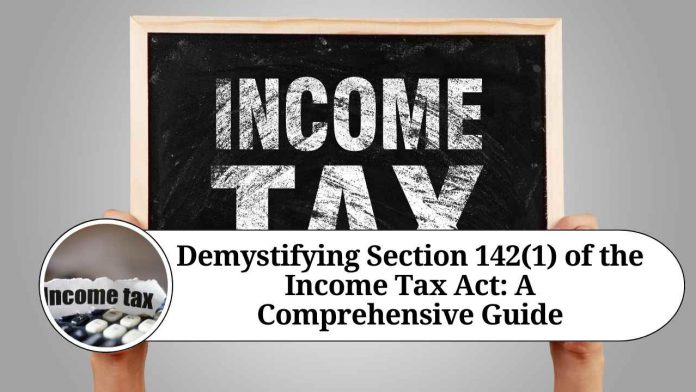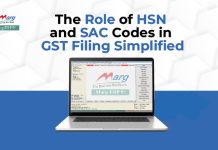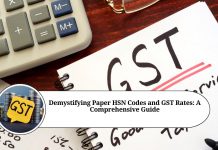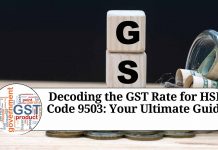Introduction
Navigating the complexities of tax laws can be a daunting task for individuals and businesses alike. The Income Tax Act plays a crucial role in governing taxation in many countries, outlining various provisions and regulations. One such provision is Section 142(1) of the Income Tax Act, which holds significance in the tax assessment process. In this blog post, we will delve into the intricacies of Section 142(1) and shed light on its implications for taxpayers.
Understanding Section 142(1):
Section 142(1) of the Income Tax Act pertains to the issuance of a notice for the assessment of income by the tax authorities. It empowers the tax department to issue notices to taxpayers in cases where their tax returns or financial records require further examination or clarification.
Notice for Scrutiny Assessment:
The primary purpose of Section 142(1) is to facilitate a scrutiny assessment. Under this provision, the tax department can scrutinize the details provided by taxpayers in their tax returns. The scrutiny assessment is a meticulous examination conducted by tax authorities to ensure the accuracy and authenticity of the information declared in the tax return.
Grounds for Issuing Notice: The tax department may issue a notice under Section 142(1) based on several grounds, including:
Discrepancies or inconsistencies:
If there are apparent discrepancies or inconsistencies in the tax return or financial documents furnished by the taxpayer, the tax department may initiate a scrutiny assessment.
Underreporting or overreporting of income:
In cases where the tax department suspects underreporting or overreporting of income, a notice under Section 142(1) may be issued. This provision allows the authorities to delve deeper into the taxpayer’s financial affairs to ascertain the accuracy of income reporting.
Information received from third parties:
The tax department may receive information from various sources, such as financial institutions, regarding a taxpayer’s transactions. If this information raises doubts about the accuracy of the tax return, a notice under Section 142(1) may be issued.
Selection through computer-assisted scrutiny:
In order to ensure fair assessment, tax authorities often employ computer-assisted scrutiny techniques. This involves a systematic selection process based on predetermined criteria, such as high-value transactions or specific industry segments. Taxpayers selected through this process may receive a notice under Section 142(1).
Responding to a Notice:
Upon receiving a notice under Section 142(1), it is crucial for taxpayers to respond promptly and cooperate with the tax authorities. Failure to respond or comply with the notice can lead to penalties and further investigations.
The taxpayer should gather and present all the relevant documents, financial statements, and records as requested in the notice. It is advisable to seek professional guidance, such as a tax consultant or chartered accountant, to ensure accurate representation and compliance during the scrutiny assessment process.
Conclusion
Section 142(1) of the Income Tax Act empowers tax authorities to issue notices for scrutiny assessment. It enables the authorities to investigate discrepancies, inconsistencies, and potential underreporting or overreporting of income. Taxpayers must respond promptly to such notices and provide all requested documents and information. Seeking professional assistance is crucial to navigate the scrutiny assessment process successfully.
Understanding the provisions of Section 142(1) and complying with the requirements laid out by the tax department is essential for taxpayers to avoid penalties and maintain their tax compliance. By ensuring transparency and accuracy in tax filings, taxpayers can contribute to a fair and efficient taxation system.
Read more useful content:
Frequently Ask Questions
Q1: What is Section 142(1) of the Income Tax Act?
A1: Section 142(1) of the Income Tax Act empowers the tax department to issue notices to taxpayers for the purpose of scrutiny assessment. It allows the authorities to examine and verify the accuracy and authenticity of the information declared in the taxpayer’s tax return.
Q2: When can a notice under Section 142(1) be issued?
A2: A notice under Section 142(1) can be issued if there are discrepancies or inconsistencies in the tax return, suspected underreporting or overreporting of income, information received from third parties raising doubts about the tax return, or selection through computer-assisted scrutiny techniques.
Q3: What happens if I receive a notice under Section 142(1)?
A3: If you receive a notice under Section 142(1), it means that the tax department wants to scrutinize your tax return and financial records in more detail. You will be required to provide additional information, documents, and records to support the accuracy of your tax return.
Q4: Can I ignore or avoid responding to a notice under Section 142(1)?
A4: Ignoring or avoiding a notice under Section 142(1) is not advisable. It is a legal requirement to respond to such notices and cooperate with the tax authorities. Failure to comply can lead to penalties and further investigations.
Q5: What should I do if I receive a notice under Section 142(1)?
A5: It is important to respond promptly to a notice under Section 142(1). Gather all the relevant documents, financial statements, and records as requested in the notice. Seek professional guidance, such as a tax consultant or chartered accountant, to ensure accurate representation and compliance during the scrutiny assessment process.
Q6: How long do I have to respond to a notice under Section 142(1)?
A6: The specific timeframe to respond to a notice under Section 142(1) is mentioned in the notice itself. Generally, it is advisable to respond within the stipulated time to avoid any unnecessary complications.
Q7: Can I appeal against the notice issued under Section 142(1)?
A7: If you disagree with the notice or believe it to be unjustified, you have the right to appeal against it. You can file an appeal with the appropriate appellate authority, presenting your case and providing supporting evidence.
Q8: What happens after the scrutiny assessment is completed?
A8: After the scrutiny assessment, the tax department will evaluate the information and documents provided by the taxpayer. Based on their findings, they may either accept the taxpayer’s declarations or make adjustments to the tax liability, if necessary. The taxpayer will be informed about the outcome of the assessment.
Q9: Can I be penalized for errors found during the scrutiny assessment?
A9: If errors or discrepancies are found during the scrutiny assessment, the tax department may levy penalties or initiate further investigations. It is essential to ensure accuracy and transparency in tax filings to avoid penalties.
Q10: How can I minimize the chances of receiving a notice under Section 142(1)?
A10: To minimize the chances of receiving a notice under Section 142(1), it is crucial to maintain accurate and comprehensive records, report income correctly, and ensure compliance with all tax regulations. Seeking professional advice and conducting regular self-audits can help identify and rectify any potential issues before filing tax returns.




















